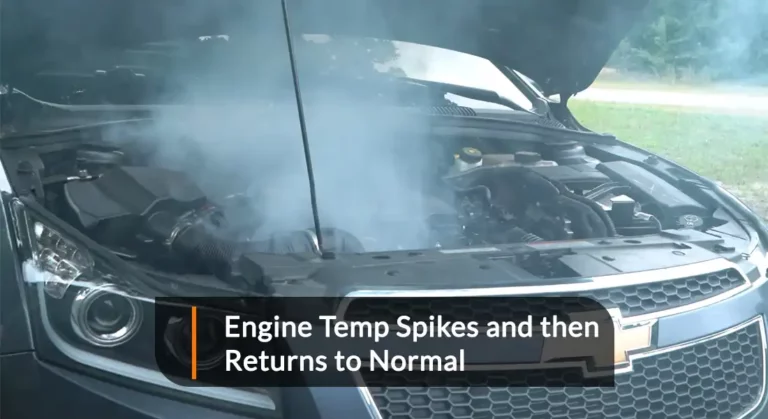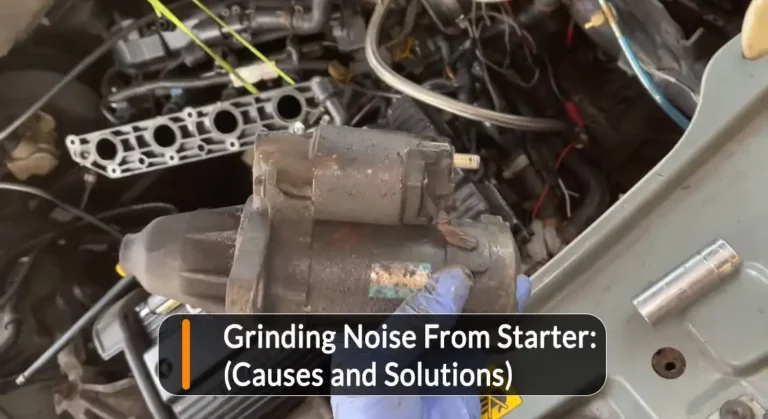Why Is My Fuel Pump Not Getting Power? 7 Reasons To Check & Fix
The fuel pump is the key component that decides where your car will move or not. So, if there is no power to fuel pump, your vehicle will suffer limitations in its performance.
The possible causes may include:
- Fault or damage to the fuel pump and its functioning components
- Malfunctions and miscommunications with the system interface
- Issue with wirings
Solutions for each issue are different but don’t worry;here, we will go through all the possibilities on why there is no power to the fuel pump and the steps you can take to solve this issue.
Fuel Pump Not Getting Power – 7 Reasons To Check
Here are the possible reasons why your fuel pump is not receiving any power and how you can fix them:
#1- Blown or Problematic Fuse
If you think that your fuel pump isn’t receiving any power, then the first thing that you should check is the fuse. Most of the time, a blown fuse is the reason why the pump isn’t getting any power.
Start off by finding the fuse box. The location ofthe fuse box differs from one vehicle model to another. So, make sure to consult your car’s manual beforehand. Once you have found the fuse, inspect it, and if it seems to be damaged, then replace it with a new one.
Do keep in mind that you will have to bring in a fuse with the same amperage; otherwise, the power supply toward the fuel pump will be imbalanced, which can lead to further damage to the fuse box.
Also, do make sure to turn off the car battery before you open up the fuse box.
#2- Fuel Pump Relay Failure
The relay controls ensure that power reaches the fuel pump in the first place. That won’t happen if the relay is malfunctioning or is faulty. Replacing the relay should take care of this issue.
But first, make sure to clean the relay and its surrounding areas. Sometimes, dust and dirt gather around,causing the relay to malfunction.
#3- Look for Wiring Issues
When power is not reaching the fuel pump, and neither the fuel fuse nor the relay is responsible, then almost half of the time, it is a wiring issue that is preventing power from reaching the fuel pump.
Start off by looking for any loose connections, damaged wirings, or corroded terminals. Also, examine the condition of the wiring harness which connects the fuel pump to your vehicle’s power source.
If you find any issues, then simply just change that wire. It is not recommended to repair wiring because if there is an issue with one portion, similar problems can emerge from the other portions as well.
Now, if the wiring is loose, you can just tighten it, which should fix the problem. You can also opt for a sealant in this condition, but it is better to get a professional opinion before committing yourself to a sealant.
#4- Faulty Fuel Pump
Another strong possibility for the fuel pump not getting enough power is the fuel pump itself. There can be multiple reasons in this case,including a broken motor, worn-out brushes, or any internal damage. Maybe the connector terminals aren’t working.
Whatever the case, replacing the fuel pump will take care of the no-power issue. That being said, you should first try to fix the fuel pump. If it isn’t any major or irreversible damage,we recommend you repair the fuel pump instead of replacing it.
If you are unsure of the overall damage, inspect the fuel pump with a professional and get their opinion on whether to repair or replace it.
To test the fuel pump, you should connect it directly to a power source and see if it still functions or not. Usually, you will get a manufacturer’s instruction guide; follow that to evaluate whether the pump is working correctly or not.
#5- An issue with Fuel Pump Control Module
Most modern vehicle models’ fuel pumps come with a control module. This module works to ensure optimal fuel distribution takes place without any issues.
When the control module is damaged, then it will automatically shut down the fuel pump, which will result in it not getting any power. If that is the case with your fuel pump, then you will have to replace the control module.
But getting to the control module can be extremely challenging if you don’t know your way around a vehicle. You will also need to perform various diagnostic tests with specialized equipment to come to a conclusion.
So, we suggest you take your car to a mechanic’s shop where they can take care of the testing and replacing parts.
#6- Problem with the Ignition Switch
The ignition switch of a vehicle is responsible for sending power to various components, including the fuel pump.
So, if it takes damage or starts malfunctioning, there is a high possibility that the fuel pump won’t be able to receive any power, resulting in it not working.
To ensure this is the case, you will have to check the power at different terminals, and if the output is negative, then all you will have to do is get rid of the current ignition switch and get a new one.
That being said, sometimes the wiring is at fault and not the switch. If that is the case, you need to fix the wiring issue before marking the ignition switch as faulty.
#7- System Security Malfunction
There are quite a few systems security features in modern vehicle models. They are there to ensure that you don’t suffer any unnecessary accidents due to faulty parts in your car.
Sometimes, these systems will shut down the overall functionality of your vehicle if they detect any anomaly. When that happens, your car may not receive any power from the fuel pump.
Most of the time, system security will take this action to protect your car. The dashboard will indicate which system is making the issue, and you can take steps to fix it.
But in some rare cases, the system security malfunctions. If that happens to you, you must consult your car manual or contact the dealership for your support.
Remember that system overrides should be done by the manufacturers, the dealership, or some expert. If you do it all on your own, then you might end up violating the warranty contract and end up damaging your vehicle seriously.
Does the System Notify If When There is No Power to the Fuel Pump?
Yes and no. No specific system warning light will illuminate and say that the fuel pump isn’t receiving any power. But if the pump isn’t delivering fuel properly to the engine, then the check engine light will turn on.
Apart from that, OBD fault codes can be detected by a diagnostic scan tool. This can help you to identify that there is an issue with the fuel pump and power distribution.
Modern car models come with an auto component safety detection system, which can also notice that there is some problem with the engine and the fuel.
Lastly, you can see that the fuel meter never goes down if there is an issue with the fuel pump.
This is because if it gets no power,it won’t be working, and the fuel will remain in the tank. This way, you will be easily notified of your fuel pump’s inactivity.
Read Also: What Should You Do If the Car’s Fuel Range Going Up and Down?
Can I Drive with No Power to Fuel Pump?
No, you can’t. Driving isn’t safe if you think the fuel pump is not receiving enough power. This is because the fuel pump provides the necessary amount of fuel to the engine it uses to function.
So, if it is not working properly, then very soon the engine will stop functioning, and it will lead to the car coming to a stop, and all systems may stop functioning as well.
When that happens, you may even lose your brake controls while you are in motion. This can lead to some serious accidents. So, don’t try to drive if there is a slight chance that the fuel pump might not receive power.
Also, the engine components may suffer from overheating if you try to turn them on without providing enough fuel. Therefore, don’t try to drive with no power to the fuel pump.
Read Also: 6 Reasons Why Fuel Pump Won’t Turn On With Ignition
Frequently Asked Questions (FAQs)
1. What does a fuel pump do?
It’s main function is topump fuel from the fuel tank to the engine.
2. How often should you change the fuel pump?
Usually, fuel pumps last around a hundred thousand miles to one hundred and sixty thousand miles.
3. Do you always need to replace your fuel pump?
This mainly depends on the damage; repairing isn’t cost-effective, so replacement is the best decision.
Read Also: Fuel Gauge Reading Empty When Tank Is Full- Why & How To Fix?
Final Thoughts
When there is no power to the fuel pump, your car will start functioning properly and eventually come to a stall. The more you ignore it, the worse the situation will get. That is why you should resolve this issue as soon as possible.



